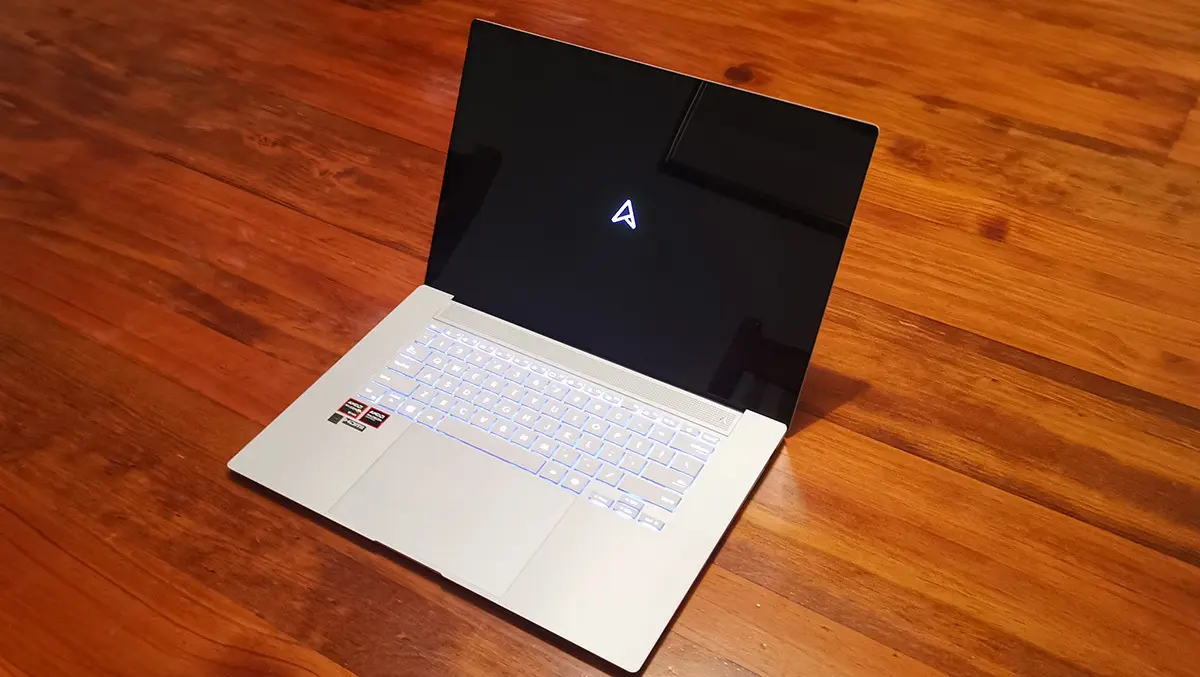
Hands-on review: Asus Zenbook S 16 with AMD Ryzen AI 9 HX 370 Processor
The sleek Asus Zenbook S 16 laptop features an AMD Ryzen AI 9 HX 370 Processor that can utilise onboard artificial intelligence processing to power AI applications.
The Asus Zenbook S 16 is rather slight at just over a centimetre thick. The 35.36cm x 24.30cm size makes it almost a little too big to just slip in your bag, something I like about the smaller Zenbooks. Still, it only weighs 1.5 kg.
The 16-inch 2880 x 1800 Asus Lumina OLED touch-screen display delivers crisp graphical detail with a 0.2ms response time at a 120Hz refresh rate. The panel is HDR capable with a 500nits peak brightness, and Pantone validated. The high refresh rate is a bit wasted on what is a general computing device and not a games machine, and at 400/500nits, brightness is a little too low to really be true HDR. But ignoring the marketing and looking at the screen itself, it's a very nice display.
The aluminium chassis looks very snazzy and is pretty sturdy for such a thin device. The backlit chicklet keyboard feels nice and responsive and has a Windows Copilot key. The touchpad supports gestures to adjust things like brightness and volume easily. There's no fingerprint reader, but the full HD IR camera supports Windows Hello facial recognition.
The review model had the AMD Ryzen AI 9 HX 370 processor (with an onboard Radeon M890 GPU and an AMD XDNA NPU) paired with an impressive 32GB of Samsung K3K9L90CM-MGCT DDR5 7500Mhz memory. Storage is provided by a 1TB NVMe PCIe 4.0 SSD occupying a solitary M.2 2280 PCI 4.0 x4 socket.
Even though the machine is ridiculously thin, it still has plenty of sockets for your peripherals. There's a USB 3.2 Gen 2 Type-A socket, two USB 4.0 Gen 3 Type-C sockets that support displays and power delivery, an HDMI 2.1 socket, an audio jack and an SD card reader.
The Zenbook S 16 performs well against desktop PCs running AMD 7000-Series CPUs. I tested the Zenbook S 16 using the industry standard Crossmark, PCMark10 and Cinemark R23. I compared the results against scores from desktop PCs running AMD Ryzen 7 7700X and AMD 9 7950X CPUs.
These CPUs may be a couple of years old, but even against what was AMD's flagship Ryzen 9 7950X, the Zenbook's Ryzen AI 9 HX 370 kept up quite well, only really losing out against the desktop CPUs' multi-core scores. The results show that the laptop holds its own against reasonably powerful desktop machines, and is a high-performing device with not only Office applications but also creative and digital content creation tools.
The Zenbook S 16 isn't a games machine, but it seems a waste of that beautiful screen not to play games on it. Thanks to the laptop's very fast WiFi 7 wireless capabilities, you can stream hundreds of games for free if you have an Xbox Game Pass Ultimate subscription. With a decent wireless Internet connection, it works marvellously. I played a bit of Microsoft Flight Simulator (using an Xbox Series S gamepad plugged in via USB), a game that can bring a desktop PC to its knees.
For a laptop that delivers such a surprising amount of performance, the battery lasts for a long time. It was a couple of days before I got a warning to connect the charger. It's also very quiet.
Whilst my tests confirmed that the Zenbook S 16 is a powerful laptop, what about the device's AI functionality, I hear you say?
Artificial intelligence is the talk of the town right now. It's a technology that always seemed to be on the horizon, but now it is with us and will likely change everything. In time, that is.
Until recently, the overt use of AI has been almost exclusively carried out in the cloud, on anonymous server farms that could be located anywhere. To use it you've sometimes had to sign away your rights and agree that your data could be used to train AI. It's been a bit murky.
This is where this new generation of laptops, like the Asus Zenbook S 16, come in. The Ryzen AI 9 HX 270's neural processing unit, or NPU allows AI computations to be carried out locally, both protecting your valuable data and without the need for an internet connection.
AI isn't necessarily new for personal computing. We have had graphics processing units upscaling images and optimising gaming for a few years. Most PCs also have a few background tasks being optimised by AI.
The Zenbook S 16 uses AI for the rather mundane task of dynamic system memory allocation, but the AMD XDNA NPU can be put to work with more exciting applications. For an application to use the NPU, it needs to be programmed to use it, and we are starting to see this now with Microsoft rolling out its Copilot+ AI assistant. The Zenbook S 16 comes with Asus StoryCube preinstalled, which is a digital image and video organiser that uses the NPU to sort out your local media collection.
Dedicated NPUs are a little ahead of the curve and, to be honest, still very much underutilised. It pays to get a machine with onboard AI capabilities, though, as I can see more and more developers making use of them, including upcoming versions of Windows.
The Asus Zenbook S 16 is a very impressive and stylish laptop, the perfect vessel for AMD's Ryzen AI 9 HX 370 processor. It isn't a cheap device, but for the price, you are getting a premium product. It's such a beautiful-looking and virtually silent machine that has both amazing battery life and great performance.


